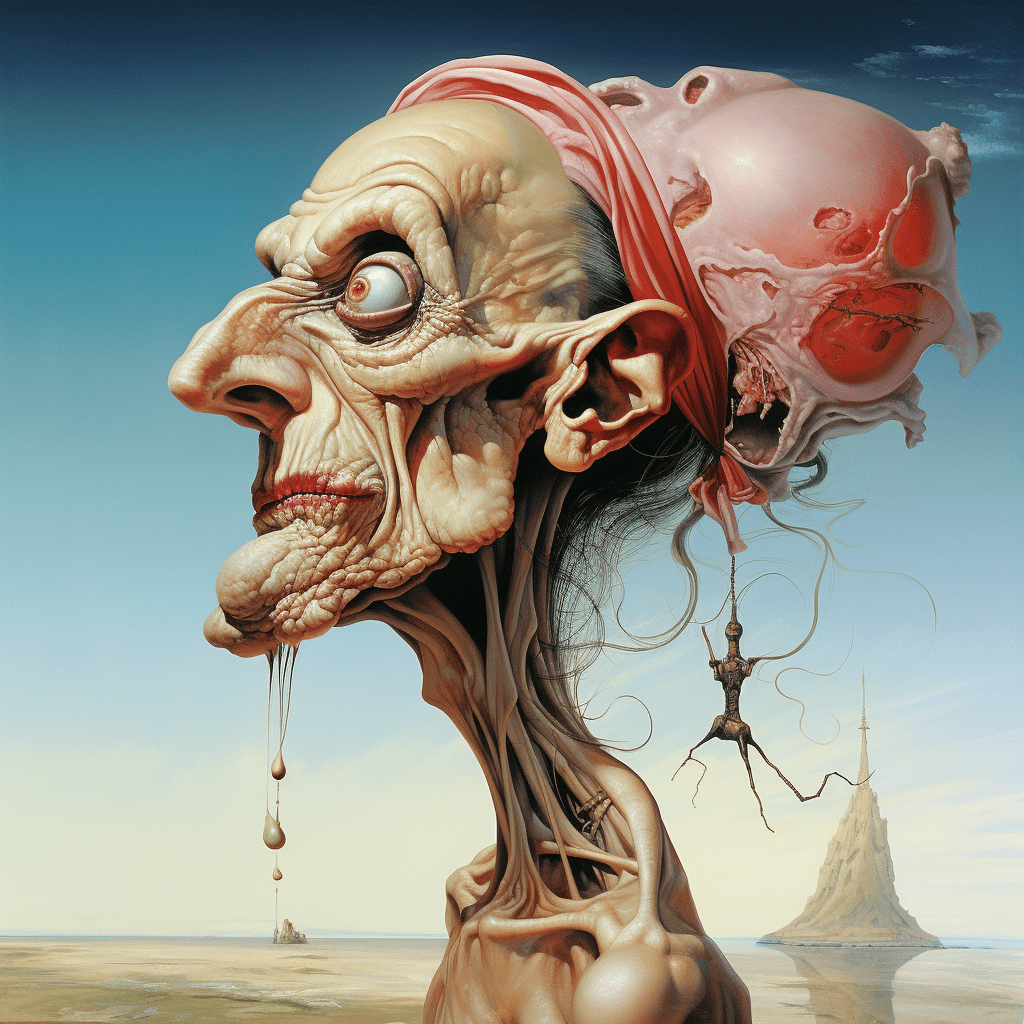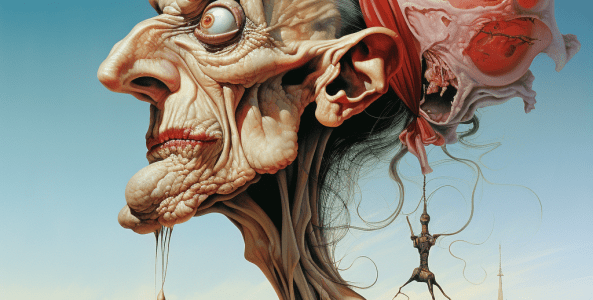Introduction:
In the vast territory of world literature, certain stories transcend both time and culture, offering profound insights into the human experience. The fairy tale of “Snow White” in the oral tradition is one such narrative, a timeless tale that compels us to delve deeper into the intricate connection between life, art, and nature. This general journey aims to unravel the layers of significance behind the mysterious phrase, “mirror, mirror on the wall, who’s the fairest of them all?” (alternatively, “mirror, mirror on the wall, who is the most beautiful of them all?”). It prompts us to contemplate the ideas of life imitating art and art imitating nature. However, its most notable contribution lies in providing a poignant glimpse into the intricate world of envy and jealousy among women, particularly across different age groups. As we embark on this comprehensive exploration, we will examine the complexities of this ancient tale, unveiling the profound implications of aging, the resistance to embracing its inevitability, and the emergence of self-absorbed tendencies that underpin the story.
I. The Duality of Life, Art, and Nature: “Life Imitates Art” and “Art Imitates Nature”
The eternal debate surrounding the connection between life, art, and nature is a philosophical puzzle that has intrigued scholars and thinkers for many generations. On one side, proponents argue that life mimics art, suggesting that human existence is profoundly influenced and molded by the creative expressions of its makers. On the other side, we encounter the notion that art imitates nature, asserting that art is a reflective mirror that accurately portrays the world. The story of “Snow White” occupies a special position, embodying both of these viewpoints. It showcases the craftsmanship of its creators while also revealing the deep-rooted and inherent human tendency to experience emotions, specifically jealousy and envy, in response to perceived shortcomings.
II. Envy and Jealousy Among Women: An Age-Old Narrative Predicament
Within the narrative of “Snow White”, there exists a character whose actions extend beyond the boundaries of folklore – the malicious stepmother. Her envy and jealousy, aimed at her youthful stepdaughter, reflects a perplexing aspect of human behavior: the inclination of older women to feel envy, jealousy, and bitterness towards their younger counterparts. This theme is not an isolated occurrence confined to literature, but rather deeply ingrained within society itself. However, it is crucial to recognize that this envy and jealousy does not solely stem from a resistance to the aging process; instead, it originates from narcissistic tendencies that plague the human psyche.
III. The Enduring Fascination: “Mirror, Mirror on the Wall”
The notorious inquiry that the malevolent stepmother directs towards her mystical-looking glass, “mirror, mirror on the wall, who is the most beautiful of them all?” encapsulates the core of her persona. It represents the unyielding human preoccupation with physical appearance and the relentless pursuit of remaining the center of attention. The mirror serves as a conduit for her self-absorption, reinforcing the belief that her value and influence are inherently connected to her attractiveness.
IV. The Hesitation to Embrace the Aging Process
One of the most profound aspects of the stepmother’s envy and jealousy in “Snow White” is her resolute refusal to embrace the natural progression of getting older. Her fixation on youthfulness and beauty exemplifies an unwavering human struggle. As a researcher specializing in literature, it is impossible to disregard the recurring theme of aging and the continual quest for upholding youthful charm found in various narratives.
V. The Unstoppable Attraction of Timeless Beauty
Motivated by envy and jealousy, the malicious stepmother’s actions reach their climax as she goes to great lengths to eradicate Snow White, who represents everlasting kindness and beauty. Although this jealous act may seem extreme in its repercussions, it actually mirrors society’s wider fixation on youth and beauty. It brings attention to the toxic rivalry that can arise between women of varying ages, largely due to societal demands and norms.
VI. Deeper Insights: The Tale of “Snow White”
In the traditional folk story of “Snow White”, we encounter a deep exploration of themes like envy, growing old, and the relentless pursuit of physical attractiveness, all interwoven into a captivating narrative. The stepmother’s self-absorbed tendencies and fixation on the mirror effectively illustrate the futility of trying to remain the center of attention. This tale serves as a stark reminder that beauty is fleeting and an obsession with youth can lead to harmful outcomes.
For researchers and writers in academia, stories like “Snow White” provide an invaluable understanding of intricate human behaviors and societal expectations. This timeless fairy tale offers a constant reminder that the perception of beauty is temporary and that resisting the natural process of aging can have severe consequences. Ultimately, the enigmatic phrase “mirror, mirror on the wall” not only reflects one’s self-image but also delves into the profound depths of our collective psyche and our enduring quest for everlasting beauty. It prompts us to contemplate our own reflections and acknowledge the implications of defying the inevitability of aging.
VII. A Brief Exploration of Human Psychology: Envy and Self-Importance
To truly grasp the intricacies of the narrative in “Snow White”, we must delve into the depths of human psychology. Envy and jealousy, particularly among women, are complex emotions influenced by various factors. In the case of the evil stepmother, her envy and jealousy stem from both a perceived threat to her status and a reflection of her own value.
a. Perceived Threat: The envy and jealousy the evil stepmother feels towards Snow White are not solely a result of her own vanity, but a response to what she perceives as a direct challenge to her position. Snow White’s youth and beauty serve as a constant reminder of the stepmother’s aging and diminishing attractiveness. This threat to her status as the fairest in the land becomes a trigger for her envy and jealousy.
b. Self-Worth and Validation: The evil stepmother’s fixation on beauty and the mirror as a judge of her worth emphasizes a deeper longing for validation. Her self-esteem and self-worth are closely tied to her physical appearance. As Snow White surpasses her in beauty, the stepmother’s sense of worth diminishes, compelling her to resort to extreme measures.
VIII. Analysis of Societal Pressures and Expectations
It is valuable to examine the societal pressures and expectations that form the foundation of the wicked stepmother’s envy and jealousy. Many societies associate beauty with youth while portraying aging as undesirable. These ideas contribute to the fierce competition between women of different age groups, with older women often feeling marginalized in comparison to their younger counterparts.
IX. The Timeless Relevance of “Snow White”
“Snow White” goes beyond being a simple fairy tale and acts as a reflection of the human experience. It delves into the depths of jealousy and narcissism, as well as the enduring theme of mankind’s pursuit of everlasting beauty. For academic researchers and writers, stories like “Snow White” offer a wealth of insights into human behavior, societal norms, and the profound ways in which literature mirrors and influences our lives.
Conclusion:
In our brief exploration of the traditional fairy tale “Snow White”, we have examined the complex connection between life, art, and nature, while uncovering the intricate nuances of envy, jealousy, the passage of time, and the relentless pursuit of beauty. The portrayal of the evil stepmother, with her self-absorbed tendencies and fixation on her reflection, serves as a stark reminder of the futility of resisting the natural process of aging. The enduring significance of “Snow White” lies in its ability to reflect our collective consciousness, urging us to ponder our own self-perceptions. It forces us to confront the consequences of defying the inevitable aging process and the pursuit of an unattainable and fleeting ideal of beauty. As we contemplate the profound themes within this timeless tale, we discover that the enigmatic phrase “Mirror, mirror on the wall” not only reflects our own image, but also reveals the intricate depths of our human nature, societal values, and unending quest for everlasting beauty.



What an amazing article. I have read the story many times but never truly put any thought into it. You mind is amazing.